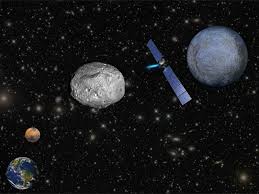Current research shows that there is a possibility of finding breakthroughs in the field of interstellar travel. An ongoing study has scientists propose to develop a unique nano-material that could levitate objects using light. Achieving such a discovery would see scientist create a spacecraft that could reach other galaxies in 20 years. Researchers at the California Institute of Technology propose using light as the source of fuel for such a spacecraft. While the research is still at the theoretical phase, such an achievement could lead to tremendous change. The United States Air Force is currently funding the research.
The research, published in the Nature Photonics journal was completed in the Harry Atwater laboratory. It relies on the idea of using nanoscale patterns to move objects. The project builds upon research conducted decades ago where scientist developed an optical tweezer that enabled them to manipulate nanoparticles using pressure generated from a laser beam. A breakthrough would allow scientists to tap on that energy and realize greater distances for larger objects. The research upon which their study builds upon formed the basis for the 2018 Nobel Prize in Physics. However, the optical tweezers achieved movements by minimum distances. Additionally, they could only move small objects.
In an analogy given by the first author in the study, Dr. Ognjen IIic said that it is possible to levitate a ping pong ball using air from a hairdryer. However, he said the problem with such a situation is that it became continually difficult to levitate a bigger ball with the same stream of air. Also, the ability to maintain levitation dropped when the ball was far apart from the dryer. With the new research, scientists are looking to the possibility of manipulating objects meters away with a beam of light.
The scientists propose developing a specific pattern on the surface of the object that would interact with light and generate thrust. The research adds that the light beam doesn’t necessarily need to be focused on the object or spacecraft. As such, even a beam million miles away way would work. Professor Harry Atwater, the director of the Joint Center for Artificial Photosynthesis, said that the end goal of the ambitious project was the development of a new propulsion technique for a spacecraft. While the end goal is still miles away, he said that they were at the first step of testing the principles. Covering a spacecraft with the pattern structures would enable it to travel and receive control actions from a laser based on Earth. Consequently, as it needs not to carry fuel, speeds closer to the speed of light can be achieved reducing the time to other stars.






